
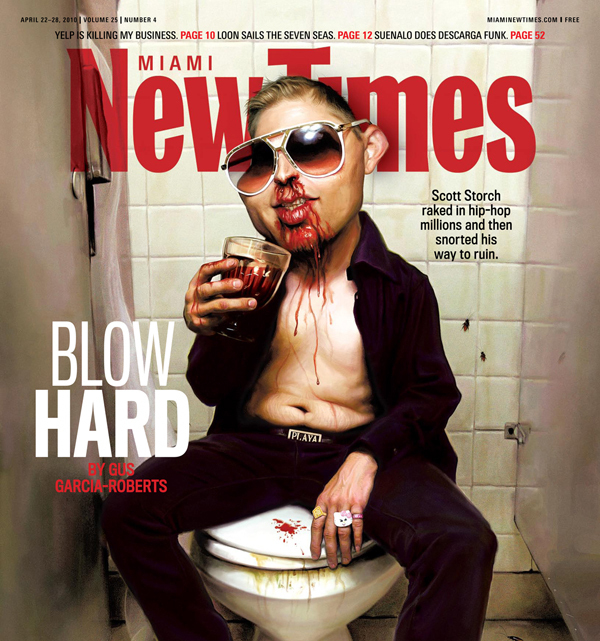


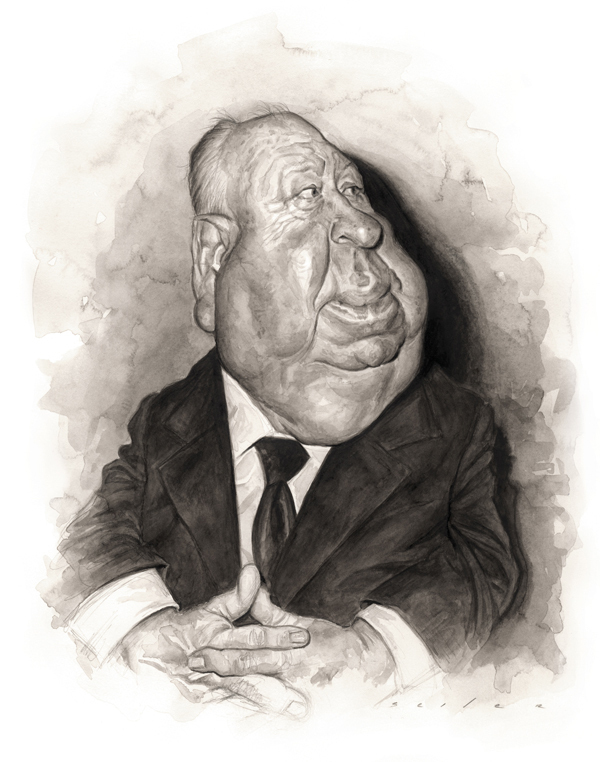
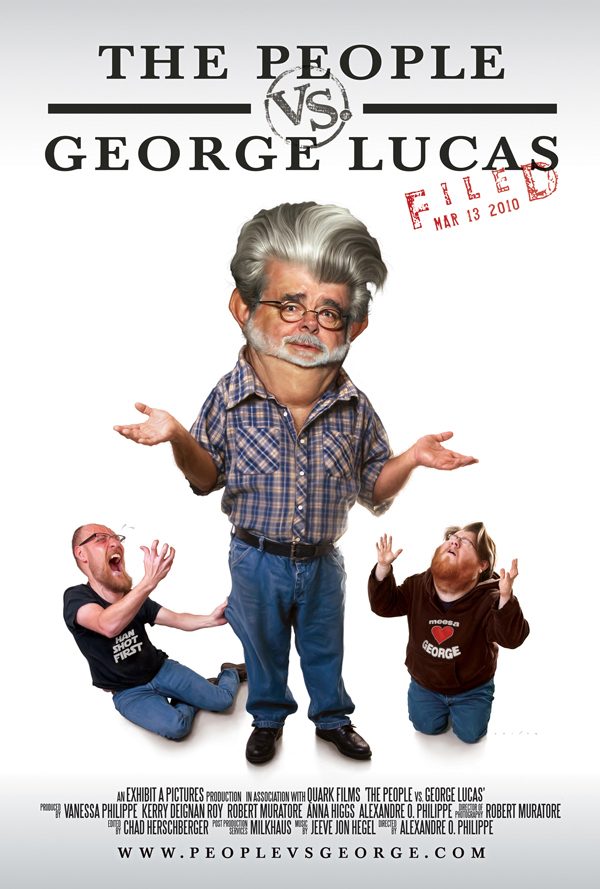
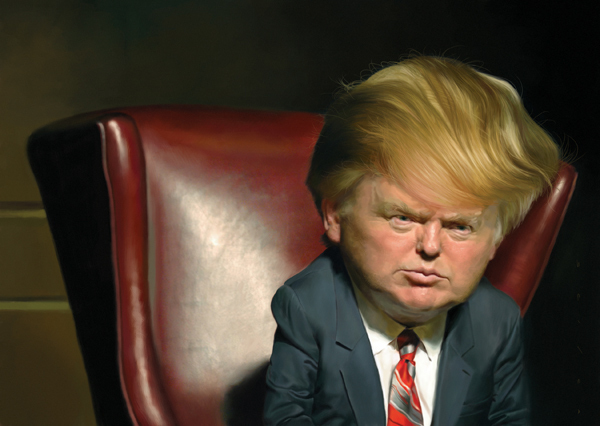
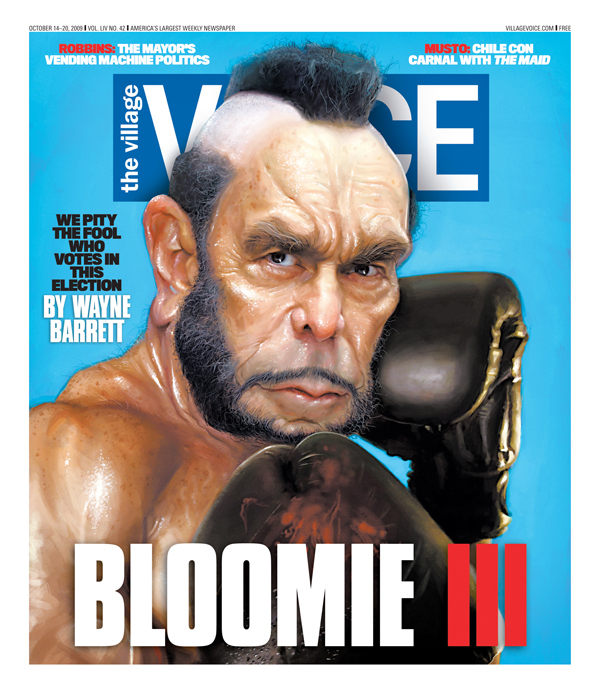

PROCESS
Many artists can draw a decent likeness of a well-known face, but thechallenge is to capture not just the likeness but the character of theperson. Capturing this truth, or essence, is, for me, the mostimportant factor in considering a portrait successful or not. Byobserving the unique qualities of the individual, I am able (hopefully)to render a realistic depiction beyond mere likeness. One of myfavorite ways to do this is through exaggerated form; the slightestpush of an expression or posture, in just the right place, can tell theviewer quite a bit.
A traditional painter at heart, I loveworking with oil, acrylic and watercolor. However, due to thefast-paced world of publishing, I have taught myself how to paintdigitally using a Wacom, 21” Cintiq. This amazing piece of technologyallows me to work naturally, intuitively drawing and painting directlyon the LCD display. My technique when painting digitally is verysimilar to the way I paint with oils or acrylics. I tend to work fromdark to light, focusing mainly on values and color harmony. I never useany form of photo manipulation. The work that I create digitally ishand drawn and painted. Working digitally has its advantages for bothmyself and art directors: no fuss or time spent on scanning and colorcorrecting, ability to make changes quickly and easily, and the time ittakes me to create a painting digitally versus traditionally is cut inhalf. The best part is that the final result looks like a traditionalpainting. The results are so similar that people often confuse mytraditional and digital paintings, unable to tell which is which.
Beforebeginning a piece I generally create several thumbnail sketches. Doingthumbnails is a simple and quick way for me to find interestingcompositions and explore character shape and proportion. I use mythumbnail sketches like short-hand notes; typically, I don’t share themwith art directors, unless they ask, as they can be confusing to anyonebut myself. After developing the thumbnails, I quickly move on to thesketch.
By this stage, having the idea and composition set, Ibegin to take pictures for reference. Using friends and myself asmodels, I can control the lighting, folding in clothing, poses, handgestures and expressions. (I have used my own face many times forcreating expression for my subjects; it pays to have a rubber face!)After gathering all the references I will need, I do a final sketch. Ilove to draw and I because I believe that drawing is the foundation formy art, I take special care to get it just right. If the drawing isright, the painting will be right. A strong drawing and compositionmust come first. Often times, I prefer sketching on a toned backgroundrather than a white background. This helps me lay down my line work andquickly establish light and darks, giving my sketch depth and a life ofits own in a very short amount of time.
Once the sketch isapproved, I prepare it for painting. I typically cover my entire sketchwith a thin layer of raw umber, using the sketch in the same way anunder-painting is utilized in traditional painting.
My paintingstend to have a lot of detail, but don’t let that fool you. The detailsare only the final touches. The most important thing is the drawing,and once I have that to my satisfaction I focus on capturing light andestablishing strong values. I create a limited palette and use onlythose colors for the duration of the painting.
Because of myexperience with painting in oil and acrylic, painting digitally comesnaturally; mixing color digitally is done basically the same way it isdone traditionally, only easier and quicker. It can be a temptation fordigital painters to get carried away and create near-photo, realisticresults, but, for me, this approach is against all that I love aboutpainting. I enjoy finding a thumbprint on a painting or seeing loosehairs from a paintbrush entombed forever in the art. I purposely leavebrush marks visible, knowing that as long as the lighting and valuesare correct, the painting will still have a very realistic look andquality alongside its traditional feel.
Many artists can draw a decent likeness of a well-known face, but thechallenge is to capture not just the likeness but the character of theperson. Capturing this truth, or essence, is, for me, the mostimportant factor in considering a portrait successful or not. Byobserving the unique qualities of the individual, I am able (hopefully)to render a realistic depiction beyond mere likeness. One of myfavorite ways to do this is through exaggerated form; the slightestpush of an expression or posture, in just the right place, can tell theviewer quite a bit.
A traditional painter at heart, I loveworking with oil, acrylic and watercolor. However, due to thefast-paced world of publishing, I have taught myself how to paintdigitally using a Wacom, 21” Cintiq. This amazing piece of technologyallows me to work naturally, intuitively drawing and painting directlyon the LCD display. My technique when painting digitally is verysimilar to the way I paint with oils or acrylics. I tend to work fromdark to light, focusing mainly on values and color harmony. I never useany form of photo manipulation. The work that I create digitally ishand drawn and painted. Working digitally has its advantages for bothmyself and art directors: no fuss or time spent on scanning and colorcorrecting, ability to make changes quickly and easily, and the time ittakes me to create a painting digitally versus traditionally is cut inhalf. The best part is that the final result looks like a traditionalpainting. The results are so similar that people often confuse mytraditional and digital paintings, unable to tell which is which.
Beforebeginning a piece I generally create several thumbnail sketches. Doingthumbnails is a simple and quick way for me to find interestingcompositions and explore character shape and proportion. I use mythumbnail sketches like short-hand notes; typically, I don’t share themwith art directors, unless they ask, as they can be confusing to anyonebut myself. After developing the thumbnails, I quickly move on to thesketch.
By this stage, having the idea and composition set, Ibegin to take pictures for reference. Using friends and myself asmodels, I can control the lighting, folding in clothing, poses, handgestures and expressions. (I have used my own face many times forcreating expression for my subjects; it pays to have a rubber face!)After gathering all the references I will need, I do a final sketch. Ilove to draw and I because I believe that drawing is the foundation formy art, I take special care to get it just right. If the drawing isright, the painting will be right. A strong drawing and compositionmust come first. Often times, I prefer sketching on a toned backgroundrather than a white background. This helps me lay down my line work andquickly establish light and darks, giving my sketch depth and a life ofits own in a very short amount of time.
Once the sketch isapproved, I prepare it for painting. I typically cover my entire sketchwith a thin layer of raw umber, using the sketch in the same way anunder-painting is utilized in traditional painting.
My paintingstend to have a lot of detail, but don’t let that fool you. The detailsare only the final touches. The most important thing is the drawing,and once I have that to my satisfaction I focus on capturing light andestablishing strong values. I create a limited palette and use onlythose colors for the duration of the painting.
Because of myexperience with painting in oil and acrylic, painting digitally comesnaturally; mixing color digitally is done basically the same way it isdone traditionally, only easier and quicker. It can be a temptation fordigital painters to get carried away and create near-photo, realisticresults, but, for me, this approach is against all that I love aboutpainting. I enjoy finding a thumbprint on a painting or seeing loosehairs from a paintbrush entombed forever in the art. I purposely leavebrush marks visible, knowing that as long as the lighting and valuesare correct, the painting will still have a very realistic look andquality alongside its traditional feel.







